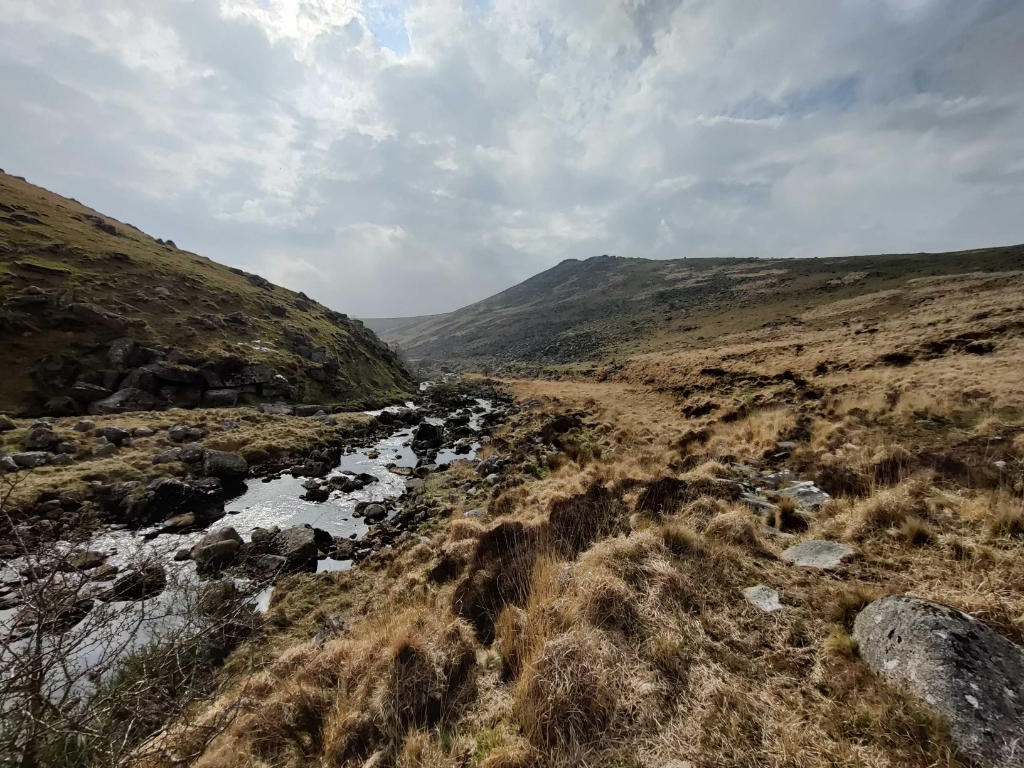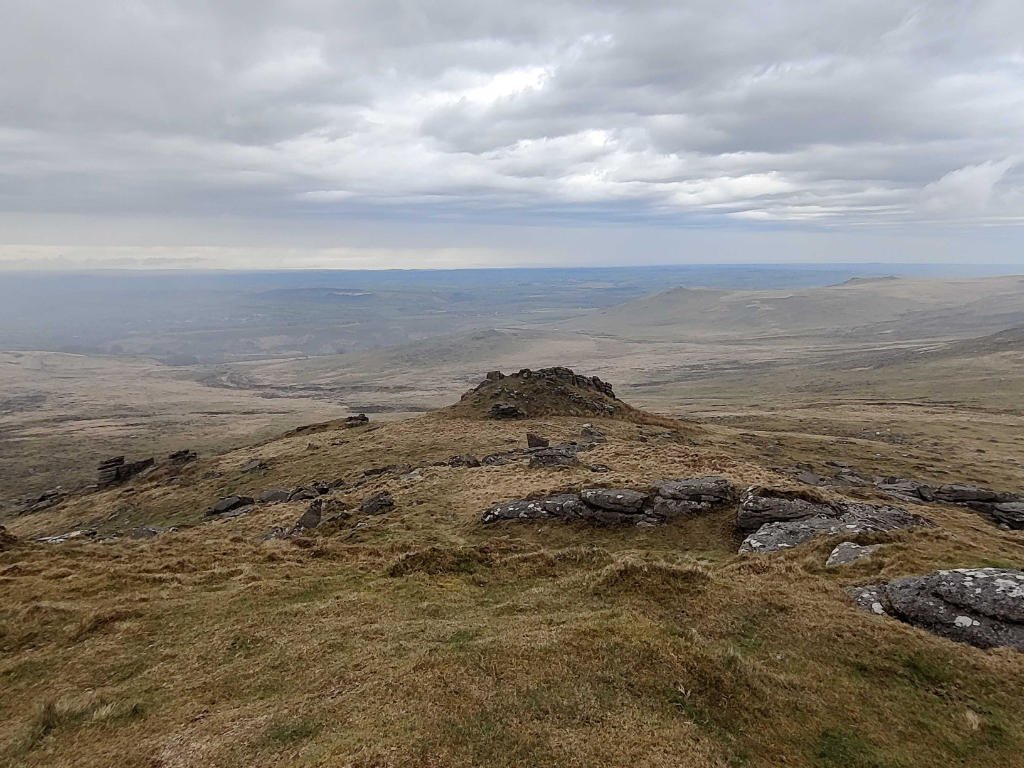
The much-anticipated Independent Review of Protected Site Management on Dartmoor was published on 13 December 2023. It was overshadowed by the COP28 deal, but locally it’s just as significant: after all, Dartmoor is by far the largest area managed for wildlife in the south-west, and its peat bogs hold carbon stores equivalent to an entire year’s worth of UK greenhouse gas emissions. Its future is a central piece of the jigsaw that illustrates our country’s journey towards climate and nature resilience.
For Chair David Fursdon and his expert panel, the Review must have been a formidable task. Dartmoor’s ‘commons’ are in a desperately poor state, with only 16 per cent of the highly protected SSSIs (Sites of Special Scientific Interest) in good condition: but the causes of this are complex, the solutions controversial and the context divisive, with many commoners barely on speaking terms with the government agency Natural England (NE).
Given the challenges, for the panel to produce a half-decent report in the extremely tight timeframe would be a considerable achievement. Their task will not have been made any easier by politicians – many of whose minds were firmly made up long before the review was commissioned – breathing down their necks.
Shortly before it was published, I set out five tests for the report. So how does it shape up? I’ll start with the good stuff, of which there is plenty.
Look at wildlife on Dartmoor as a whole
The report does a good job here. Dartmoor may have one of the largest SSSIs in the country, but much of the wildlife interest falls outside the legally protected areas. It would have been all too easy for the report to focus exclusively on the SSSIs, attempt to solve the challenges here and simply push the problems elsewhere; but the report avoids this seductive trap and rightly places a lot of emphasis on enhancing wildlife and managing livestock right across the National Park. Some of the most exciting opportunities to bring back nature, such as the recently announced Landscape Recovery Areas, sit outside the SSSIs, and the report rightly recognises this.
Base conclusions on evidence, not unsubstantiated claims or widely held opinion
The results here are a little more mixed. You certainly get a sense of just how complex the issues are and the pains the panel have gone to, speaking to a plethora of groups and individuals with very different perspectives. Commoners, conservationists, land owners, government agencies, archaeologists, scientists…the list goes on. Charting a safe course through this turbid channel of currents, whirlpools and freak waves was never going to be easy. Yet the report does so skilfully, and this will be a huge help in rekindling that all-too-absent characteristic of recent Dartmoor politics: trust. It was disappointing, however, not to see more mention of the scientific evidence submitted – not least the compelling statistics of declines in bird species and numbers.
Recognise the severity of the threats to our natural environment and the need for action
The report acknowledges the poor state of Dartmoor and the ecological and climate crises. It also highlights the crucial importance of restoring wetlands, peat bogs and heather moorland, and the need for woodland to expand in valleys. It rightly focuses attention on the undesirable spread of Molinia caerulea (‘purple moor grass – a tall, tussocky gras that forms dense monocultures that can cover entire hillsides’), and stresses the need for more cattle grazing, but it sidesteps the contentious issue of overgrazing by sheep in winter, opting instead for the more politically palatable removal of gorse (a valuable habitat in its own right) to expand the areas where sheep can nibble.
There is little doubt among scientists that heavy grazing by sheep is a major factor behind the spread of Molinia and the poor state of much of the moor. So we seem to be caught in a circular argument, whereby we are urged to create more space to maintain the levels of grazing that are causing the lack of space in the first place. Neither does the report argue against deliberate, ‘controlled’ burning, despite plenty of evidence from elsewhere that the practice contributes to the predominance of Molinia. .
De-politicise the issues and recommend better ways to achieve common ground
Another mixed result. There are some excellent suggestions about reviewing governance, and much emphasis on stakeholders working together better. This is crucial – unless people are willing to talk and listen to each other, we’ll never get anywhere. The report generally avoids taking sides, but it makes strong criticisms of NE. This will no doubt please some, but as with any relationship breakdown, it is seldom owing to just one party. It would be fair to acknowledge that NE has been the victim of a decade of savage cuts, leaving the organisation threadbare. And there is no mention of the many breaches of agri-environment and SSSI stipulations by those – despite receiving substantial government funds – whose animals graze the moor,.
Avoid weak compromises and delays
This is where in my view the report is weakest. There is little sense of urgency in the recommendations: the proposals for the current grazing arrangements to stay in place for another two or three years may be a tempting compromise to keep graziers on side, but they simply kick the can down the road. Rather than reduce sheep-stocking levels, it’s suggested that commoners are given an opportunity to show that they can manage their flocks better. We’ve been round this circus before, and it’s hard to see what can change in practice. The intentions may be good, but all too often the practical measures draw us inexorably back towards the status quo. In some areas we’re unlikely to see any significant change in management until 2026 at the earliest. We simply can’t afford to wait that long.
In the classic Cold War drama Tinker Tailor Soldier Spy, the brilliant, understated George Smiley weaves his way through the labyrinthine complexities, competing departments and distrustful agents in his search for the Soviet ‘mole’ at the top of the British Intelligence Service. I can’t help drawing parallels with the challenges that must have faced David Fursdon and his team. In the drama, during a tense stand-off, a sardonic government minister brands the intelligence service a “leaky ship”, referring to classified information mysteriously finding its way to Moscow. Dartmoor is not Hollywood and there is no mole, but it is certainly leaking – carbon, biodiversity and also actual water. Ring ouzel disappeared three years ago; curlew, golden plover and a host of other species could soon follow. Peat continues to be lost, and not one of Devon’s rivers is in ‘good’ ecological condition.
David Fursdon’s panel has made a good fist of a near-impossible job. No report could please everyone, but there are crumbs of comfort for most stakeholders. I hope the government takes the report seriously and puts political weight, and funds, behind the recommendations. If it does, we should see positive changes, and Dartmoor will almost certainly be an easier place to get things done.
What the report doesn’t provide, though, is a clear plan, with a real sense of urgency, for how to start bringing nature back. If we want Dartmoor to reach its full potential – and we certainly should – we’ll need far more radical solutions than anything in this report. Without them, Dartmoor will continue to warrant that most unflattering label – a “leaky ship”.

